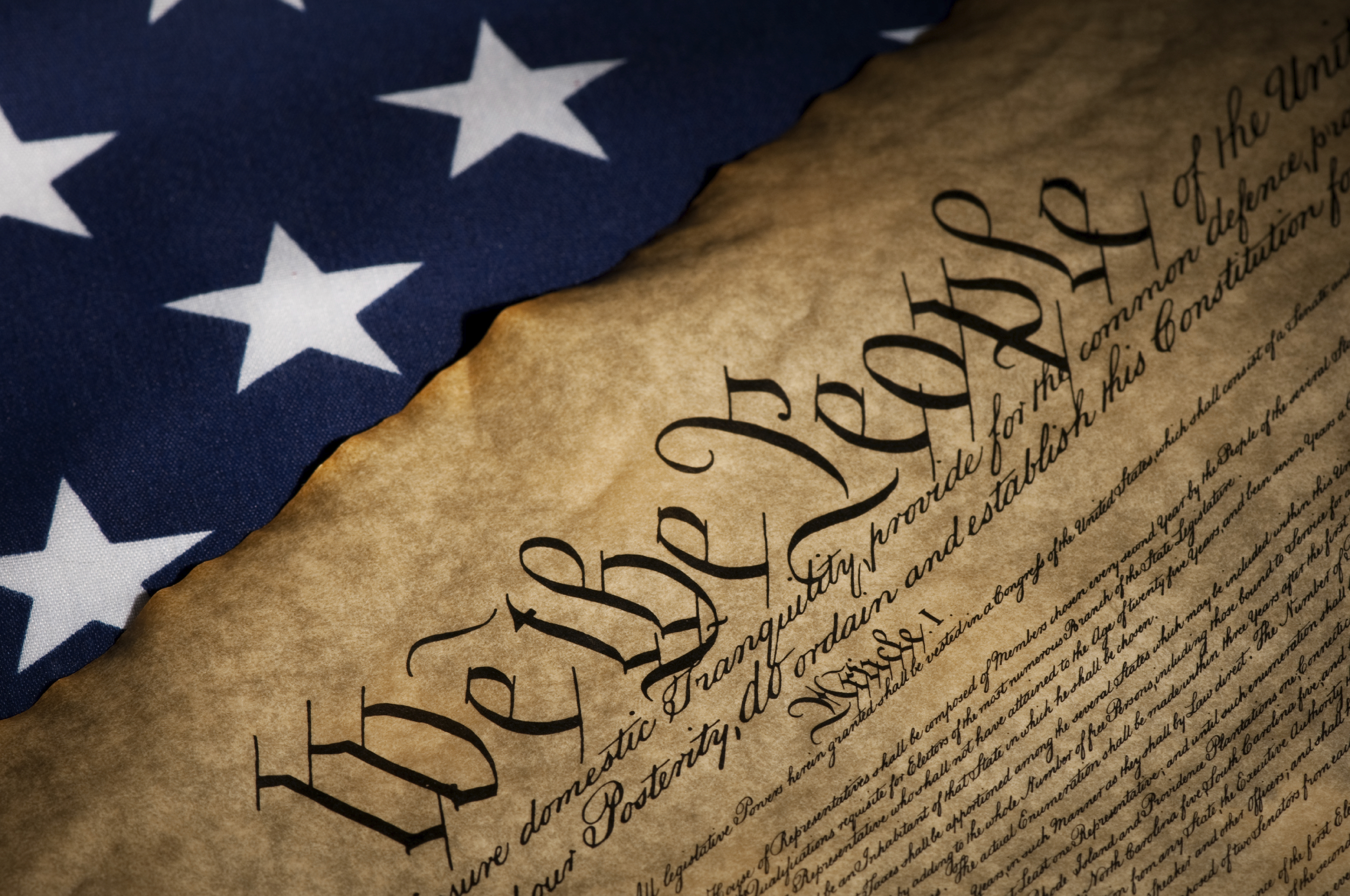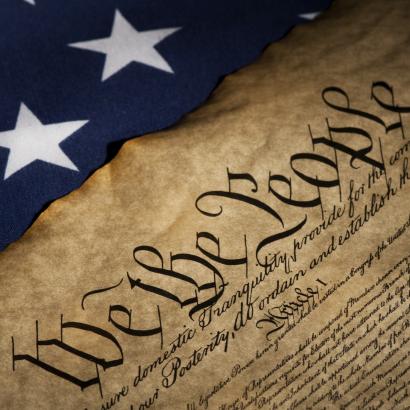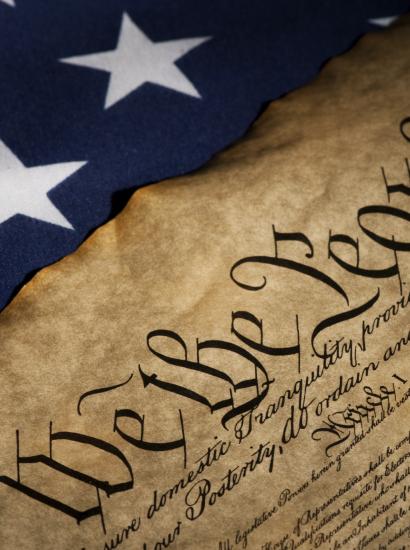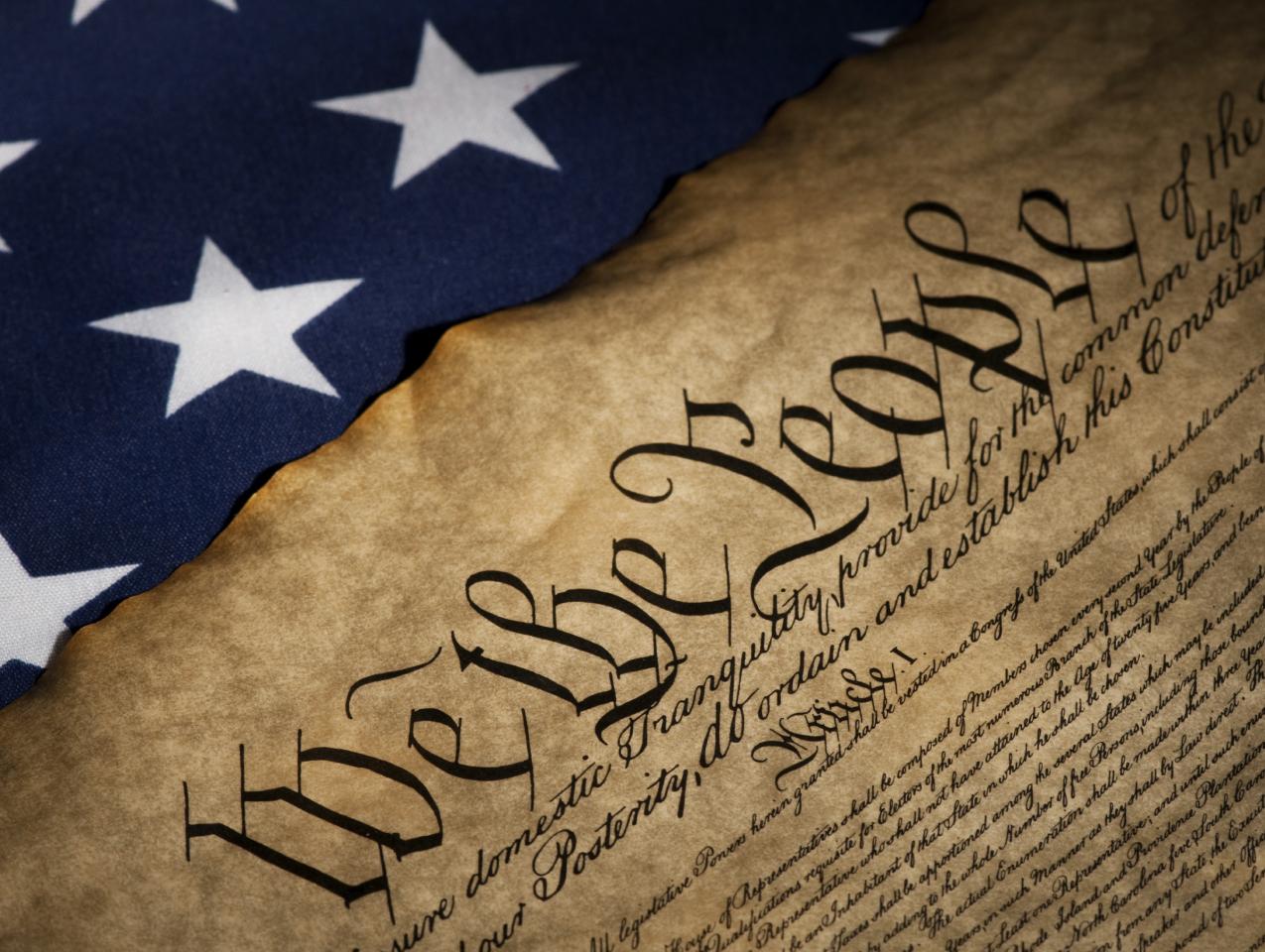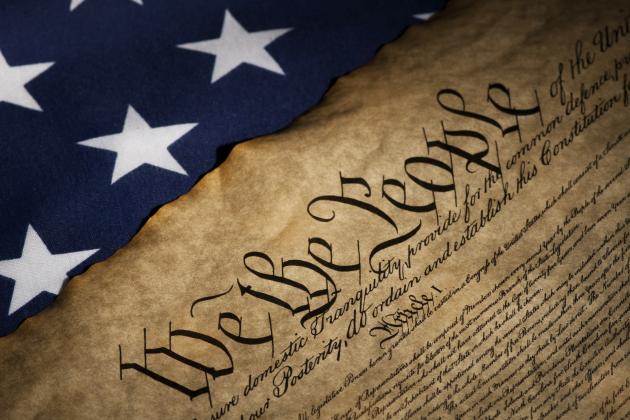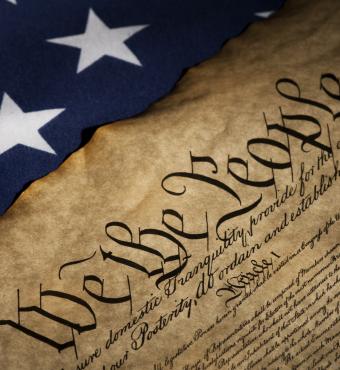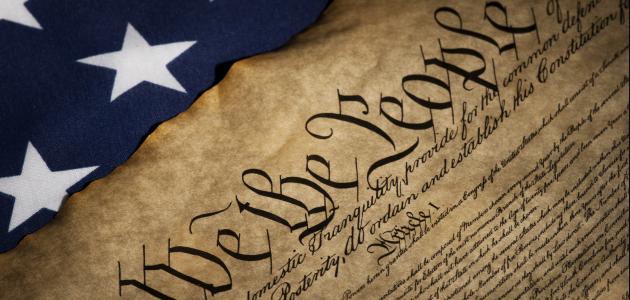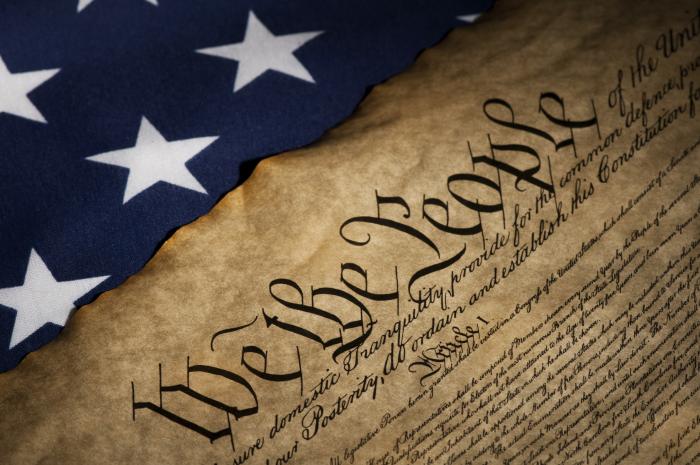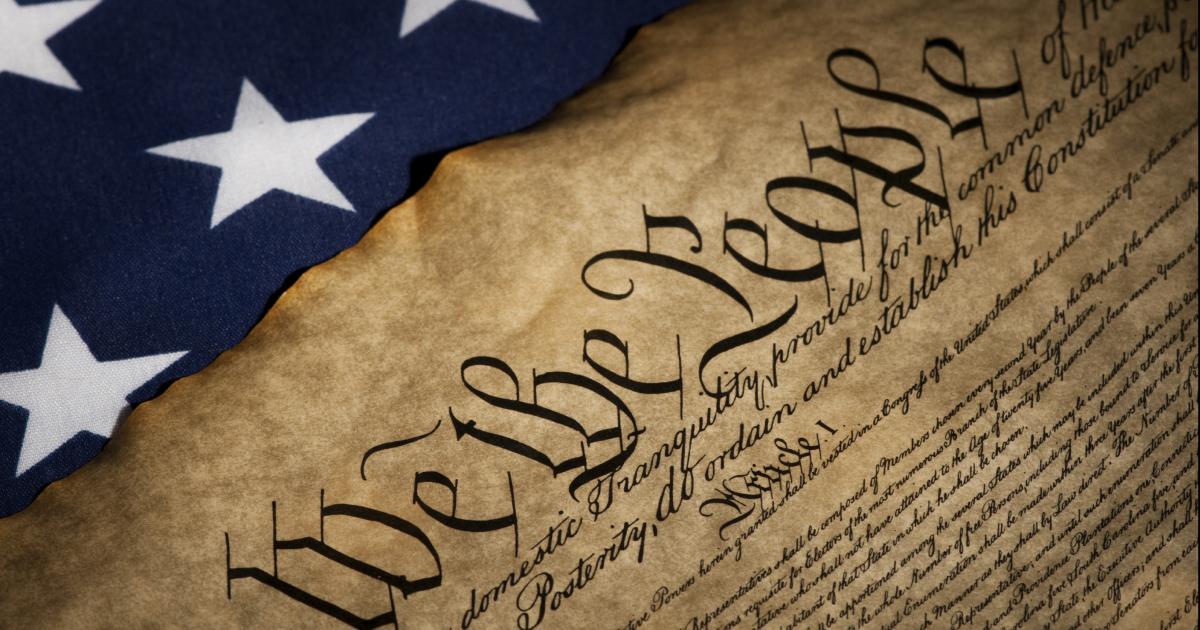- Law & Policy
In his recent column for Defining Ideas, Clint Bolick, a member of the Arizona State Supreme Court, addresses the central question of modern constitutional jurisprudence: What is the proper way to interpret the Constitution? Bolick, who is also my colleague at the Hoover Institution, casts his lot with the late Justice Antonin Scalia and his many followers who endorse textualism as the one proper method. The argument goes as follows: Textualism—the effort to find the accurate meaning of every word of the relevant provision—helps prevent activist judges from undermining the rule of law by creating new rights under the guise of a “living constitution” on such key issues as abortion, the death penalty, and gay rights, even when there is no basis for such rights in the Constitution or the laws as written.
Bolick’s strict textualist approach is a needed antidote to unduly adventurous constitutional interpretations. But however necessary the careful reading of text is to constitutional deliberation, it is not the full story. Sometimes, the courts must overturn erroneous precedents—and other times, they must, by “necessary implication,” read terms into the Constitution for its prohibitions to make sense. In such cases, the text alone is not a large enough tool-kit to do the job.
Let’s consider an issue that shows both the power and the limits of textualism. The Commerce Clause reads: “Congress shall have power . . . to regulate Commerce with foreign Nations, and among the several States, and with the Indian tribes.” In the 1824 case of Gibbons v. Ogden, Chief Justice John Marshall construed the middle phrase dealing with interstate commerce in harmony with the text’s treatment of commerce with foreign nations and the Indian tribes. His interpretation consciously covered all forms of communication and transportation across state lines, but it also excluded agriculture, manufacturing, and mining, in large measure to ensure, sadly, that slavery was immune to regulation or abolition by Congress.
Marshall’s interpretation was, however, rudely upended in the New Deal decision of Wickard v. Filburn, which in 1942 let Congress escape the earlier restraints on its power by regulating activities like agriculture, mining, and manufacturing that were entirely local because of their “indirect effects” on interstate commerce. By that one stroke, Congress could now regulate all economic affairs, national or local. The motivation for this radical expansion of government power could not have been more unwise: cartelization. Justice Robert Jackson wanted to allow the federal government to regulate the output and price of all agricultural crops, which could not be done under the original meaning of “commerce.”
Congress quickly filled the space created by Wickard, by enacting major pieces of legislation such as the Civil Rights laws of 1964, the Environmental Protection Act of 1970, and the Affordable Care Act of 2010. But these statutory programs lie on a rickety constitutional foundation. So, what should be done? Do we strike them down, in whole or part, or let them stand? Textualism requires us to upend long precedents notwithstanding the huge reliance interests that rest on decisions such as Wickard. Yet it offers no guidance for whether or how that monumental task should be undertaken.
Consider another case. In 1954, in Brown v. Board of Education, a unanimous Supreme Court relied on the Fourteenth Amendment’s equal protection doctrine to end de jure racial segregation in schools by overturning the infamous 1896 decision in Plessy v. Ferguson, that enshrined the “separate but equal” doctrine. But did the text of the Equal Protection Clause require that result? Not likely. The original public meaning of Equal Protection concerned the enforcement of the criminal law, not the distribution of public benefits from education, which is one reason why Brown proved so difficult to write. Nonetheless, a “faint-hearted originalist” like Justice Scalia would have joined a unanimous Court in 1954 to help end the segregation that flourished in part due to the systematic denial of the franchise to blacks citizens.
A different set of challenges to textualism is tied to the Second Amendment: “A well regulated Militia, being necessary to the security of a free State, the right of the people to keep and bear arms shall not be infringed.” In Heller v. District of Columbia, Justice Scalia held that there was a constitutional right to keep and bear handguns subject to the power of the government to impose, under the police power, reasonable restrictions on their use. But this interpretation violates two of the textualist canons that Bolick supports.
First, as Justice John Paul Stevens wrote in dissent, Scalia treated the introductory clause of the Second Amendment as “mere surplusage,” without noting that it has a perfectly intelligible purpose. Articles I and II of the Constitution set out the distribution of power over the militia between the Congress, the President, and the states because the militia had dual state and federal functions. On this reading, the Second Amendment as a whole provides that the federal government cannot restrict the right of the citizens of the states to keep and bear arms essential to performing their role in state militias, whether or not they are called into federal service. Accordingly, the Second Amendment does not apply to the District of Columbia—the one place with no federal/state relations. That same structural focus explains why the Second Amendment does not, through the Fourteenth Amendment, limit the power of states to regulate local gun ownership, as was wrongly held in 2010 in McDonald v. City of Chicago.
Second, Scalia’s interpretation requires reading into the Constitution some notion of the state’s police power—i.e., its general power to regulate—because the right it protects is “not unlimited.” As Scalia writes, “nothing in our opinion should be taken to cast doubt on longstanding prohibitions on the possession of firearms by felons and the mentally ill, or laws forbidding the carrying of firearms in sensitive places such as schools and government buildings, or laws imposing conditions and qualifications on the commercial sale of arms.” Each of these exceptions appeals to the police power, a phrase found nowhere in the Constitution, which then must be first interpreted and then applied to the myriad of federal and state gun regulations.
This point about the police power has far broader implications. The substantive provisions of the Bill of Rights and the Fourteenth Amendment are all stated in absolute form. The First Amendment, for example, holds that Congress shall pass no law abridging the freedom of speech or of the press. But the vast body of preexisting common law rules governing defamation, misrepresentation, picketing, intentional infliction of emotional distress, and invasion of privacy were not thereby rendered unconstitutional. It is not all forms of speech that are protected. The idea of “freedom of speech” can only be rendered intelligible if federal and state governments may enact laws that regulate impermissible speech forms. Fraud is not constitutionally protected. And if the common law damage action after the fact is insufficient to protect against these abuses, it is perfectly proper for either or both levels of government to strengthen their protections. But the text of the First Amendment offers no textual guidance, so it is necessary by non-textual means to identify the permissible ends of government power, and to decide what means are appropriate to achieve them.
A similar analysis applies to the government taking of private property and to its regulation of economic liberties. The protection of private property does not allow anyone to use the guns they own to threaten violence against others. Nor may any individual use his or her property to commit public or private nuisances by casting noise, fumes, or filth onto the land of another, or to pollute public rivers or streams.
Organizing these police power limitations is entirely non-textual. The nineteenth-century Justices were wary of construing the police power so broadly that it left nothing of the constitutional rights that received explicit textual protection under the Constitution. Their formulaic definition of the police power, as stated in the 1905 Supreme Court case of Lochner v. New York, allowed the state to regulate in the name of the “health, safety, morals, and general welfare” of the public at large. But it was an interpretive exercise that let the state regulate the level of fumes in the workplace or displace the ordinary tort law of industrial accidents with a scheme of workmen’s compensation that dispensed without having to prove either the employer’s negligence or disprove the worker’s assumption of risk. Broad as those police power purposes were, before the New Deal they did not allow for passage of a minimum wage law, or the adoption of mandatory collective bargaining laws. Maximum-hour laws were a source of constant disagreement. But these constitutional limitations were all swept away by the New Deal that allowed these multiple forms of regulation. The need to overcome what the National Labor Relations Act called the “inequality of bargaining power” between employers and employees was sufficient to justify collective bargaining by assuming that competitive markets generate market failures that the government may rectify under this expanded definition of the police power.
Substantively, I strongly favor Lochner’s narrower account of the police power over the elastic modern tests that only ask the government to show rational basis to sustain highly intrusive legislation. But the appropriate level of scrutiny for legislation is entirely orthogonal to the textualist approach. It takes a theory—not merely a reference to the text—to explain which police power limitations are permissible and which ones are not. I believe that the classical liberal approach that stresses strong property rights and limited government justifies the narrower view of the police power. But constitutional interpretation remains so difficult because, though we must start with a scrupulous reading of the text, the law presents innumerable cases that require judges to go beyond it.







